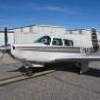Why do people freak out about ADS-B and mid-air collisions?
-
Members Online
- 1980Mooney
- AMG880
- Greg Ellis
- DonMuncy
- Mike Reed
- eman1200
- Zippy_Bird
- Alan Fox
- MooneyModified
- Lumberg
- PaulM
- avrojockey
- GeneralT001
- Gilt
- Johnny U
- Mufflerbearing
- Schllc
- Dgeyer
- Parker_Woodruff
- wombat
- BadMooneyRising
- kortopates
- TCC
- Mac80
- MattCW
- mooneyfun
- pirate
- hypertech
- christaylor302
- daytonabch04
- philiplane
- Andy95W
- Crawfish
- Aerodon
- UteM20F


Recommended Posts
Join the conversation
You can post now and register later. If you have an account, sign in now to post with your account.